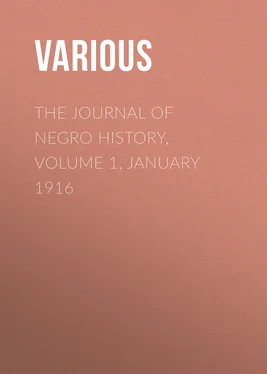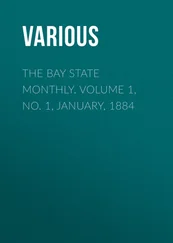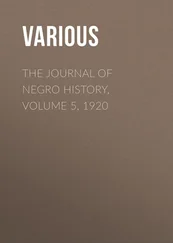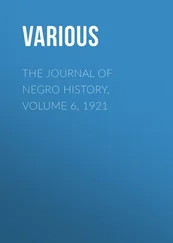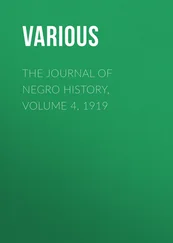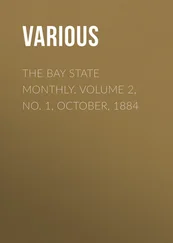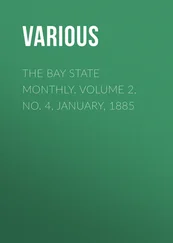Various - The Journal of Negro History, Volume 1, January 1916
Здесь есть возможность читать онлайн «Various - The Journal of Negro History, Volume 1, January 1916» — ознакомительный отрывок электронной книги совершенно бесплатно, а после прочтения отрывка купить полную версию. В некоторых случаях можно слушать аудио, скачать через торрент в формате fb2 и присутствует краткое содержание. Жанр: foreign_antique, periodic, История, foreign_edu, на английском языке. Описание произведения, (предисловие) а так же отзывы посетителей доступны на портале библиотеки ЛибКат.
- Название:The Journal of Negro History, Volume 1, January 1916
- Автор:
- Жанр:
- Год:неизвестен
- ISBN:нет данных
- Рейтинг книги:5 / 5. Голосов: 1
-
Избранное:Добавить в избранное
- Отзывы:
-
Ваша оценка:
- 100
- 1
- 2
- 3
- 4
- 5
The Journal of Negro History, Volume 1, January 1916: краткое содержание, описание и аннотация
Предлагаем к чтению аннотацию, описание, краткое содержание или предисловие (зависит от того, что написал сам автор книги «The Journal of Negro History, Volume 1, January 1916»). Если вы не нашли необходимую информацию о книге — напишите в комментариях, мы постараемся отыскать её.
The Journal of Negro History, Volume 1, January 1916 — читать онлайн ознакомительный отрывок
Ниже представлен текст книги, разбитый по страницам. Система сохранения места последней прочитанной страницы, позволяет с удобством читать онлайн бесплатно книгу «The Journal of Negro History, Volume 1, January 1916», без необходимости каждый раз заново искать на чём Вы остановились. Поставьте закладку, и сможете в любой момент перейти на страницу, на которой закончили чтение.
Интервал:
Закладка:
This upheaval had two important results. The enemies of the Negroes were convinced that there were sufficient law-abiding citizens to secure to the refugees protection from mob violence; and because of these riots their sympathizers became more attached to the objects of their philanthropy. Abolitionists, Free Soilers and Whigs fearlessly attacked the laws which kept the Negroes under legal and economic disabilities. Petitions praying that these measures be repealed were sent to the legislature. The proslavery element of the State, however, was equally militant. The legislators, therefore, had to consider such questions as extradition and immigration, State aid and colonization, the employment of colored men in the militia service, the extension of the elective franchise, and the admission of colored children to the public schools. 44 44 Hickok, "The Negro in Ohio," 90 et seq.
Most of these "Black Laws" remained until after the war, but in 1848 they were so modified as to give the Negroes legal standing in courts and to provide for their children such education as a school tax on the property of colored persons would allow 45 45 Laws of Ohio, XL, 81.
and further changed in 1849 46 46 Ibid. , LIII, 118.
so as to make the provision for education more effective.
The question of repealing the other oppressive laws came up in the Convention of 1850. It seemed that the cause of the Negroes had made much progress in that a larger number had begun to speak for them. But practically all of the members of the convention who stood for the Negroes were from the Western Reserve. After much heated discussion the colored people were by a large majority of votes still left under the disabilities of being disqualified to sit on juries, unable to obtain a legal residence so as to enter a charitable institution supported by the State, and denied admission to public schools established for white children. 47 47 The Convention Debates.
The greatest problem of the Negroes, however, was one of education. There were more persons interested in furnishing them facilities of education than in repealing the prohibitive measures, feeling that the other matters would adjust themselves after giving them adequate training. But it required some time and effort yet before much could be effected in Cincinnati because of the sympathizers with the South. The mere passing of the law of 1849 did not prove to be altogether a victory. Complying with the provisions of this act the Negroes elected trustees, organized a system, and employed teachers, relying on the money allotted them by the law on the basis of a per capita division of the school fund received by the board of education. So great was the prejudice of people of the city that the school officials refused to turn over the required funds on the grounds that the colored trustees were not electors and, therefore, could not be office-holders, qualified to receive and disburse funds. Under the leadership of John I. Gaines, therefore, the trustees called an indignation meeting and raised sufficient money to employ Flamen Ball, an attorney, to secure a writ of mandamus. The case was contested by the city officials, even in the Supreme Court, which decided against the officious whites. 48 48 Special Report of the United States Commissioner of Education, 1871, page 372.
This decision did not solve the whole problem in Cincinnati. The amount raised was small and even had it been adequate to employ teachers, they were handicapped by another decision that no portion of it could be used for building schoolhouses. After a short period of accomplishing practically nothing the law was amended in 1853 49 49 Laws of Ohio.
so as to transfer the control of such schools to the managers of the white system. This was taken as a reflection on the blacks of the city and tended to make them refuse to cooperate with the white board. On account of the failure of this body to act effectively prior to 1856, the people of color were again given power to elect their own trustees. 50 50 Ibid. , LIII, 118.
During this contest certain Negroes of Cincinnati were endeavoring to make good their claim to equal rights in the public schools. Acting upon this contention a colored man sent his son to a public school which, on account of his presence, became a center of unusual excitement. Isabella Newhall, the teacher, to whom he went, immediately complained to the board of education, requesting that he be expelled because of his color. After "due deliberation" the board of education decided by a vote of 15 to 10 that the colored pupil would have to withdraw. Thereupon two members of that body, residing in the district of the timorous teacher, resigned. 51 51 The New York Tribune , February 19, 1855.
Many Negroes belonging to the mulatto class, however, were more successful in getting into the white schools. In 1849 certain parents complained that children of color were being admitted to the public schools, and in fact there were in one of them two daughters of a white father and a mulatto mother. On complaining about this to the principal of the school in question, the indignant patrons were asked to point out the undesirable pupils. "They could not; for," says Sir Charles Lyell, "the two girls were not only among the best pupils, but better looking and less dark than many of the other pupils." 52 52 Lyell, "A Second Visit to the United States of North America," II, 295, 296.
Thereafter, however, much progress in the education of the colored people among themselves was noted. By 1844 they had six schools of their own and before the war two well-supported public schools. 53 53 The Weekly Herald and Philanthropist , June 26, 1844, August 6, 1844, and January 1, 1845.
Among their teachers were such useful persons as Mrs. M. J. Corbin, Miss Lucy Blackburn, Miss Anne Ryall, Miss Virginia C. Tilley, Miss Martha E. Anderson, William H. Parham, William R. Casey, John G. Mitchell and Peter H. Clark. 54 54 The Cincinnati Directory of 1860.
The pupils were showing their appreciation by regular attendance, excellent deportment, and progress in the acquisition of knowledge. Speaking of these Negroes in 1855, John P. Foote said that they shared with the white citizens that respect for education and the diffusion of knowledge, which has been one of their "characteristics," and that they had, therefore, been more generally intelligent than free persons of color not only in other parts of this country but in all other parts of the world. 55 55 Foote, "The Schools of Cincinnati," 92.
It was in appreciation of the worth of this class to the community that in 1844 56 56 The Weekly Herald and Philanthropist , August 23, 1844.
Nicholas Longworth helped them to establish an orphan asylum and in 1858 built for them a comfortable school building, leasing it with a privilege of purchasing it within four years. 57 57 Special Report of the United States Commissioner of Education, 372.
They met these requirements within the stipulated time and in 1859 secured through other agencies the construction of another building in the western portion of the city.
The most successful of these schools, however, was the Gilmore High School, a private institution founded by an English clergyman. This institution offered instruction in the fundamentals and in some vocational studies. It was supported liberally by the benevolent element of the white people and patronized and appreciated by the Negroes as the first and only institution offering them the opportunity for thorough training. It became popular throughout the country, attracting Negroes from as far South as New Orleans 58 58 Simmons, "Men of Mark," 490.
Rich Southern planters found it convenient to have their mulatto children educated in this high school. 59 59 A white slaveholder, a graduate of Amherst, taught in this school. See Weekly Herald and Philanthropist , June 26, 1844.
Интервал:
Закладка:
Похожие книги на «The Journal of Negro History, Volume 1, January 1916»
Представляем Вашему вниманию похожие книги на «The Journal of Negro History, Volume 1, January 1916» списком для выбора. Мы отобрали схожую по названию и смыслу литературу в надежде предоставить читателям больше вариантов отыскать новые, интересные, ещё непрочитанные произведения.
Обсуждение, отзывы о книге «The Journal of Negro History, Volume 1, January 1916» и просто собственные мнения читателей. Оставьте ваши комментарии, напишите, что Вы думаете о произведении, его смысле или главных героях. Укажите что конкретно понравилось, а что нет, и почему Вы так считаете.
